Building and Growing MicroSaaS EdTech AI Apps to $9.5k a month in spare time
TL;DR #
As of May 1st 2024, my two MicroSaaS apps for academic research and writing Sourcely and Yomu, which I built and grew in my spare time, brought me in $9,481 in revenue. Just $519 shy from $10k milestone. It has been exactly one year since the acquisition of Sourcely closed (Sourcely is an app for finding academic sources) which launched me into the MicroSaaS x Edtech AI apps space. A good chunk of the revenue is profit.
Requests to edit their full essays in the Sourcely customer chat box inspired me to take this concept further and build a complete academic writing experience from scratch, which resulted in Yomu. These two apps mark my first venture into growing and building SaaS applications, and I will be sharing my lessons with you. But before that, let me share some numbers.
Revenue and usage numbers #
Yomu is an academic AI writing editor. It is quite impressive, as we use Next.js and TipTap to offer a Notion-like editor with AI commands such as edit, autocomplete, citation search, plagiarism check, and more, specifically tailored for academic writing. Yomu was built from the ground up. As of May 19, 2024, Yomu has achieved ~$4k in MRR and ~$25k in gross revenue since its release in November 2023, just 6-7 months ago.
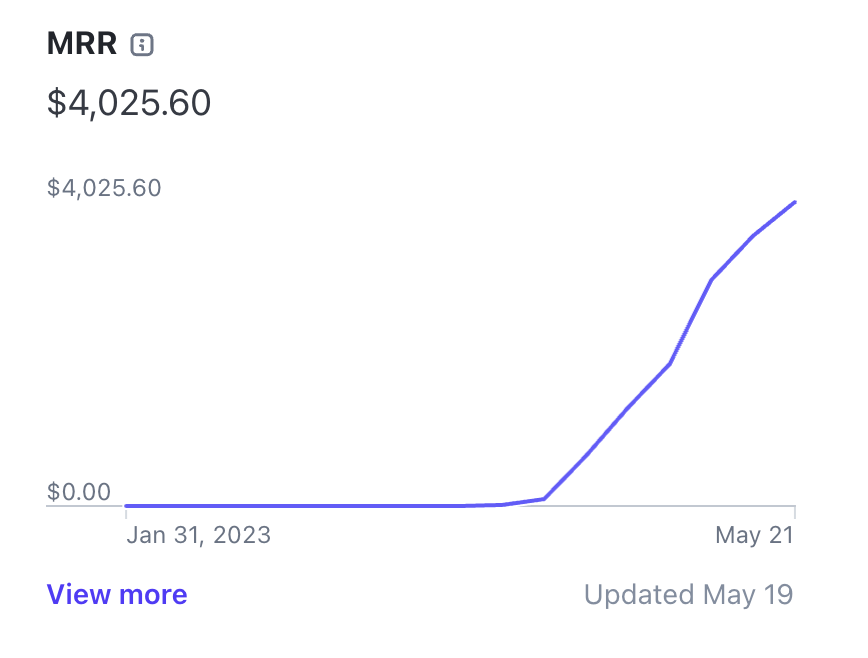 Yomu MRR as of May 21st 2024
Yomu MRR as of May 21st 2024
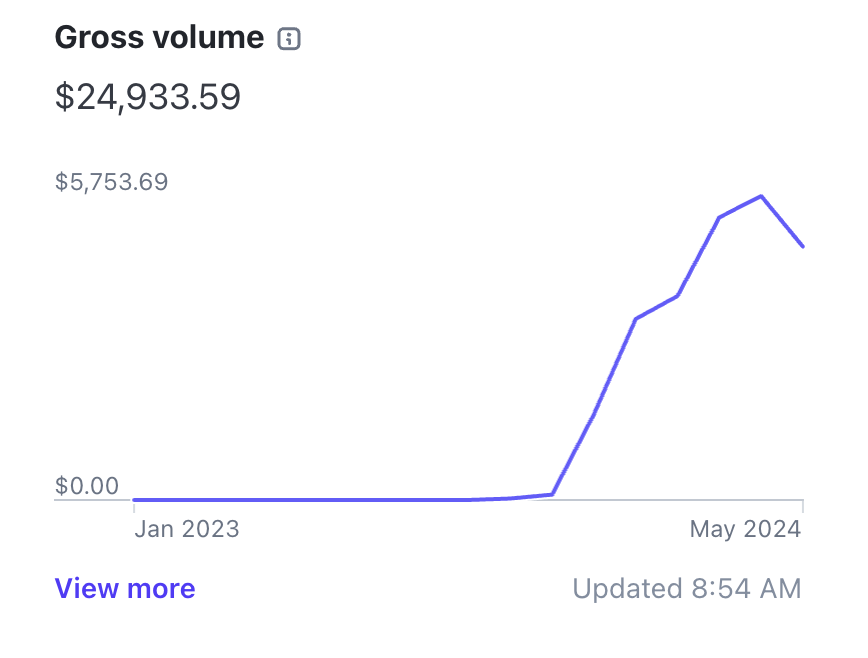 Yomu gross revenue as of May 21st 2024
Yomu gross revenue as of May 21st 2024
I have managed Sourcely since late May 2023 (see original post), and over the past year, its monthly revenue has grown 3-4 times. This growth was achieved through improvements in the landing page, improved citation search, additional features, and increased marketing efforts with SEO and influencers (in retrospect, I got lucky with the “sourcely” domain, which leads to a high Google search rating for “sources AI” related searches due to “source” being in the domain name). Since November 2023, Sourcely has consistently generated around $4K in monthly revenue.
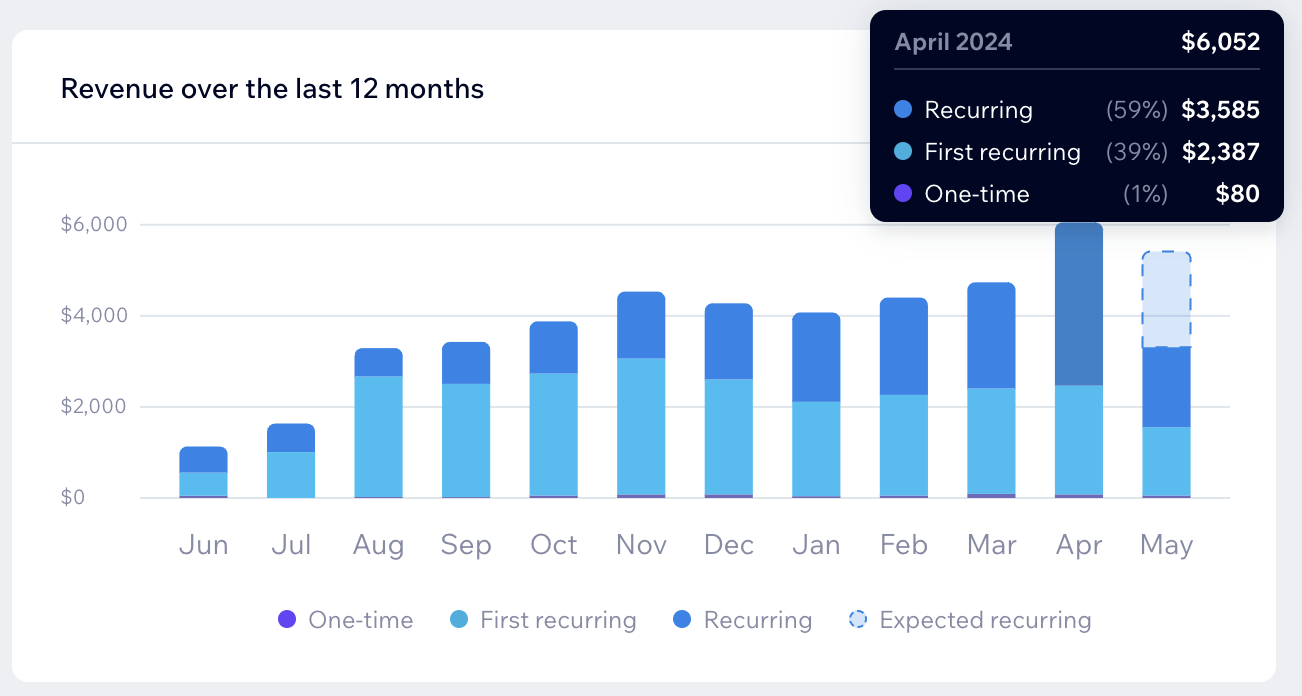 Sourcely month over month gross revenue as of May 18th 2024
Sourcely month over month gross revenue as of May 18th 2024
In terms of the actual usage, Yomu has ~37k users registered on the website, with ~25k total documents created. Sourcely has more people visiting site, but not everyone signups since the free version doesn’t require you to sign-up. In terms of the actual AI command usage, which is the most interesting bit, we have had a total of ~285k API requests during last 6 months.
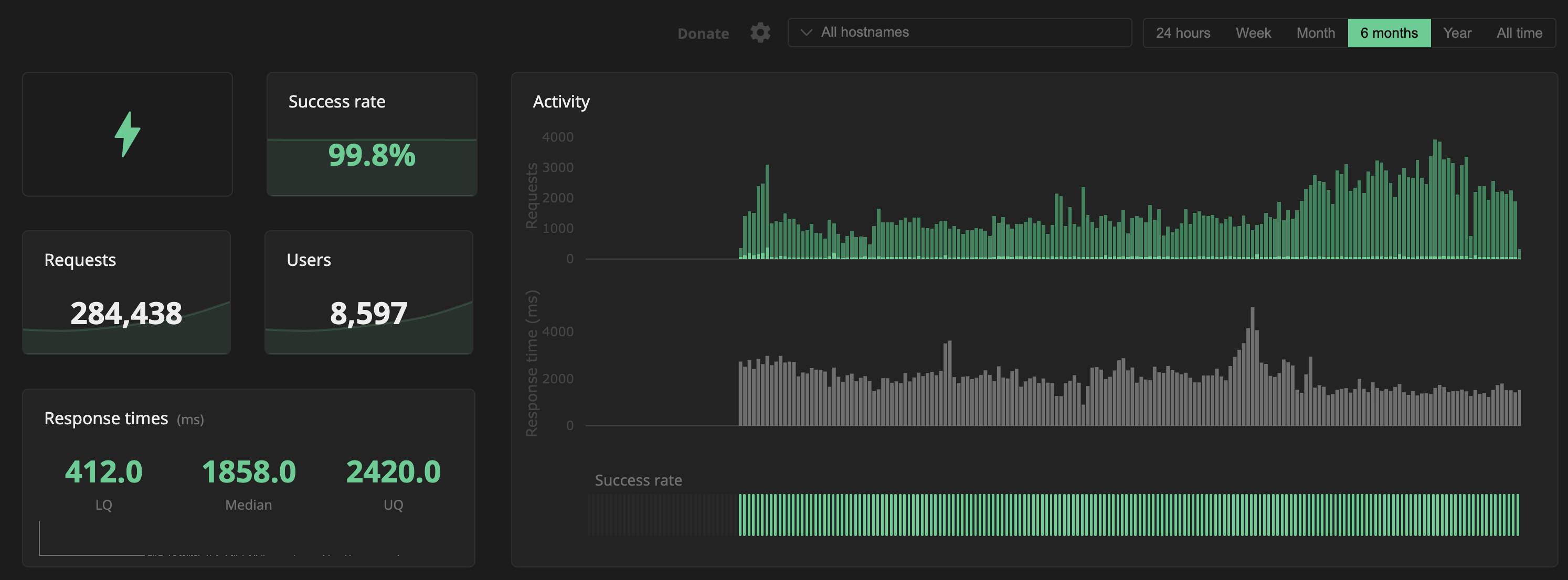 Yomu and Sourcely AI usage statistics
Yomu and Sourcely AI usage statistics
Both Yomu and Sourcely are clearly being used by the people who try it. In terms of the detailed API usage, majority of it comes from the citations, AI autocomplete, academising/paraphrasing (editing text), getting plagiarism score, and starting a new document with AI.
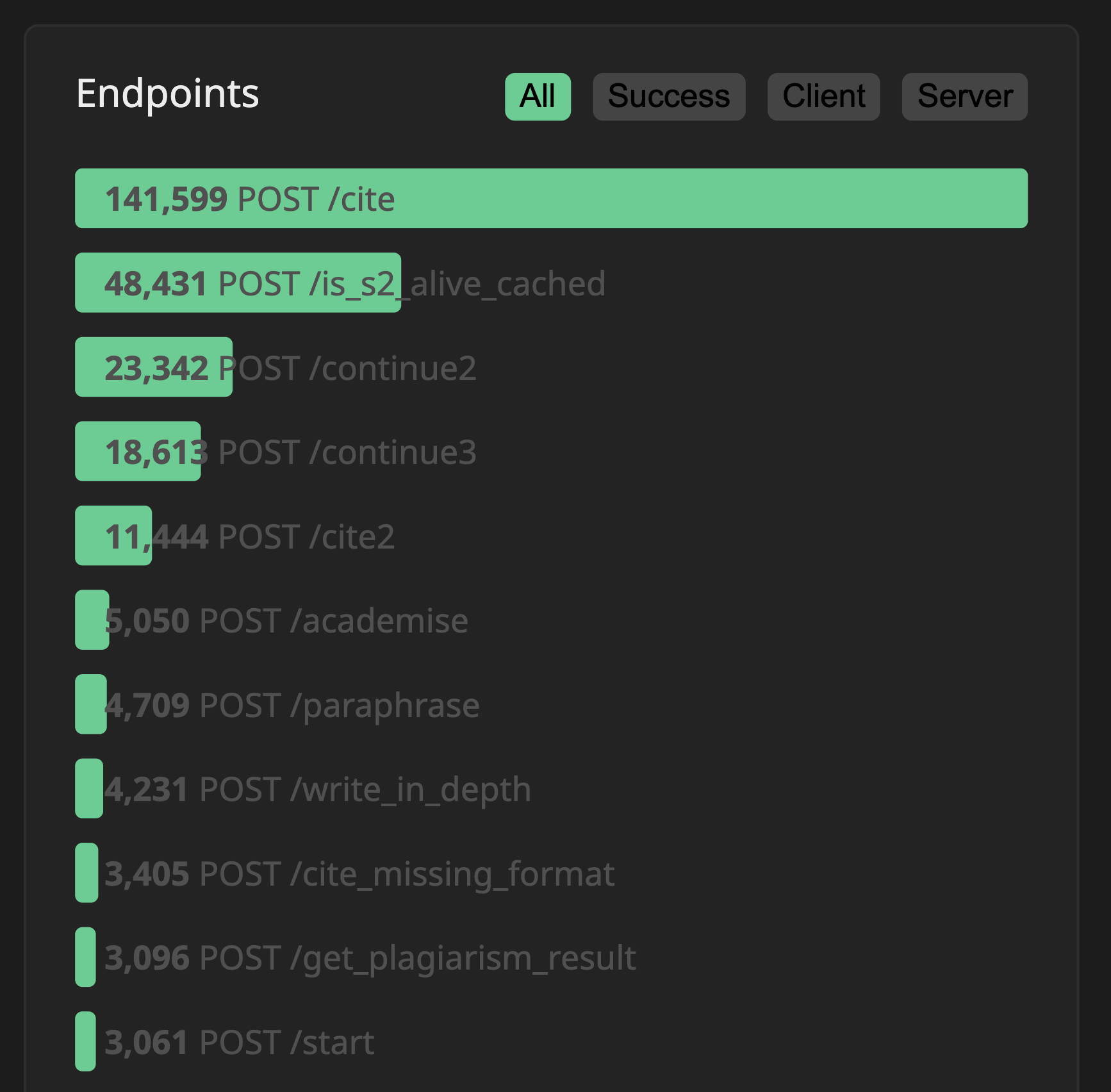 Yomu and Sourcely detailed breakdown of AI usage statistics
Yomu and Sourcely detailed breakdown of AI usage statistics
Lessons learned #
1. The results of your efforts are non-linear and likely will take time to materialize. #
Unfortunately, when building SaaS apps (or any other products), the results are not deterministic. You can spend months developing an app that generates $0 in revenue, while someone else might create a product over a weekend that goes on to make hundreds of thousands, if not millions, of dollars over its lifetime. Additionally, you never really know when your app will experience a breakthrough. Someone could create a viral thread about it without you even realizing, and it could happen at any moment when you’re not paying attention.
I don’t have specific advice because everyone’s circumstances are different. What worked for me is to keep experimenting and not give up (see my other SaaS attempt from early 2023 that only made ~$60). Eventually, opportunities will come your way. Having a full-time job definitely helps to reduce stress and avoid overthinking.
2. To succeed in marketing, you need to be comfortable with trial and error, iteration, rejection, reaching out to people, and taking risks. #
As the heading says, you need to keep experimenting to find the marketing blueprint that works for your product. There are at least a dozen ways to approach marketing (specifically B2C): SEO, ads, short-form content, long-form content, affiliate marketing, and a few others. Within each, there are potentially millions of different steps you can take to try to improve that marketing vertical. The catch? Things may not work on the first try. SEO will take months (PS make sure to put your site on Google Console), short-form content may not work out, and so on. Keep experimenting, and you will find your formula for success!
One thing I recommend to everyone in terms of marketing is to reach out to influencers in your industry, preferably on YouTube. Pitch your SaaS to be featured in their videos. YouTubers are always looking for great content, so if your SaaS aligns with their niche and audience, it’s a win-win. This strategy worked great for us in terms of conversions per view. Unlike short-form content on Instagram or TikTok, YouTube videos stick around and continue to be seen by potential customers. Most importantly, it allowed us to develop long-term collaborations with these influencers, get their feedback, implement it into our product, and ultimately improve it. Don’t be afraid to negotiate a deal involving fixed cash and affiliate commissions.
Also, the phrase “it’s just a GPT wrapper” is kind of a joke. Sure, there’s no rocket science behind the tech for Sourcely and Yomu, and any technically savvy person could replicate both services given enough time and effort. But distribution and successful marketing are less straightforward and can be more challenging than building the tech. Great marketing, a product that sticks with users (even if it’s not super technical), and strong distribution create a massive competitive advantage! Stop overthinking it.
3. Work with people as it will make a big positive difference #
That’s somewhat self explanatory but I can’t emphasize it enough.
Don’t do everything solo. It’s worth getting things done with help. Worst case? You learn something and don’t work with them again. Best case? They elevate your products and become your close collaborators.
4. Charge, charge, and charge #
Ditch your free plan (read this great blog post from Marc Lou)! Pieter Levels also says that free version of your SaaS is for the VC baked companies, which I largely agree with.
I’m not against offering a free version of your SaaS; it can be strategically beneficial. Sourcely still offers a free version because it was there before acquisition. However, time is limited, and you want to maximize the returns on your efforts. You also want to attract customers who are serious about using your SaaS. Being a fully paid SaaS without free version is a great filter for such customers.
Yomu’s growth took off once the app switched to a fully subscription-based model with an option to try AI features for a one-time fee. I was initially against this, but it became necessary because free users were overloading the server after a viral social media post in the Middle East. It turned out to be one of the best decisions we’ve made so far!
5. Getting paid customers doesn’t mean that they will stick around for long #
Once your SaaS(es) start generating revenue and you overcome the initial challenge of getting first paid customers, you will start getting some customer churn. You realize that building a successful SaaS app involves not just attracting paid customers, but also maximizing their long-term value (LTV) and minimizing churn. In other words, ensuring the customers remain loyal for as long as possible. I have not yet significantly reduced churn in either Sourcely or Yomu, which currently sits at around 25%. This may be due to the nature of these edtech SaaS apps, where students and academics use them for their papers and then move on after their deadlines.
6. Growing your SaaS(es) to 10k a month in gross revenue is not really a big deal #
It feels somewhat impossible at the beginning to make the first dollar online. Back then, you think to yourself that making $1,000 a month on the side online would be an amazing milestone. You remember that first euphoric feeling of someone buying your SaaS subscription/service online without even knowing who you are.
Once you hit your initial milestones, your targets will become more ambitious. You will then realize that while there are not that many people who even made $1 online in their life, there are quite a few SaaS/Ecom/other product builders who hit millions (if not more) in dollars in revenue/profits with small teams. And I am not talking about VC-funded companies. It is really not that crazy. You can do it too!
7. Trust and take care of yourself #
Don’t attach your self-worth to the performance of your SaaS projects. It’s easy to feel great when you see record-high subscriber numbers one day and feel sad when subscriptions drop or you receive a negative message from the customer. The rollercoaster of emotions is part of the game with its ups and downs. Trust that your services will grow, customer churn will decrease, and overall, you are on the right track.
Also, make sure to hit the gym, play sports, socialize with friends, and get plenty of rest. You need a fresh and a positive state of mind to succeed, and working every night after a full-time job will burn you out.
What I am looking forward to when re-reading this post in a couple of years #
Back in late July 2023, when I wrote a blog post reflecting on Sourcely’s acquisition I said at the end of the post that:
My ultimate goal is to see students being satisfied with our services, saving a great deal of time. From the business perspective, I would like to see us reach 10K MRR for Sourcely, and eventually reach 100K MRR for the student AI writing assistant app (the market is bigger there). Looking forward to updating myself in the coming months and years!
While Sourcely hasn’t hit 10k MRR, it has grown 3-4 times since the acquisition. Yomu isn’t a 100k MRR SaaS yet, but it has the potential to get there and is not yet another software that never made a dollar. Overall, I’m content with what I’ve accomplished over the last year, but I also acknowledge that I shouldn’t stop here. I need to overcome the current challenges and plateaus in marketing, sales, and development, and see if I can explore building other SaaS products.
The consumer market, especially for students and academics, might not be the most lucrative SaaS industry, and I might move on to other products in the future. However, I hope the lessons I’ve learned stay with me and serve as the foundation for something bigger. Summer is coming, which might lead to some slow-down in my EdTech SaaS growth. But long-term, I am optimistic that I will break through any plateau.
I hope to revisit this blog post someday with a smile, knowing I’ve hit it big.